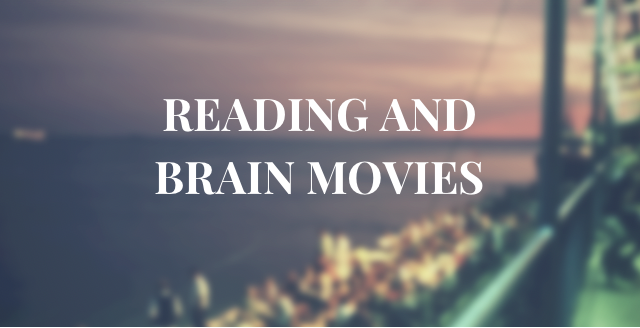4 Surprising Theories on Benefits of “Brain Movies”

Have you ever read a novel, really enjoyed the story, and then got disappointed when you saw a movie based on it? I remember reading the novel called “The 5th Wave” and finding the movie based on it rather disappointing. I’m sure that most people have had this experience at least once. Of course, this is not just limited to books. I still remember what they did to Avatar the Last Airbender. But today’s discussion is regarding books, so let’s stick to that. The reason you got disappointed watching a movie based on a book is because you had created a “brain movie” while reading the book, and the movie did not live up to your imagination. But what are the advantages of having these brain movies? How do they help us? We will answer these questions in today’s post.
What are Brain Movies?
Brain movies refer to the process by which your brain converts the words on a page into mental images. These mental images can bring stories to life and even build stories where none exist (source). So, a brain movie is essentially the visualisation that is happening in your mind while you read a book. Most people would be familiar with this in the context of reading novels, but few may know that we can use the same method on complex concepts from textbooks using techniques like memory palace (source). Let’s see how and why these brain movies can be useful.
1) Brain Movies Enhance Comprehension and Recall

A 2006 research study found that student who were taught to use visualisation while reading outperformed other students with respect to comprehension and information recall. This is the same idea as the memory palace technique, but, unlike its typical presentation, this research talks about how the visualisation can encourage comprehension along with good recall. But how does memory palace help with comprehension? I have believed for the longest time that you have to first understand the information before it can be converted to a mental image, at least for academic concepts. After all, how can you visualise something that you cannot understand?
To be specific, visualisation helps comprehension by working as an indicator that provides feedback for concepts you did not understand. It does not directly make the concept easier. At the end of the day, even the memory palace technique can do very little to help you understand an alien concept. You will have to go through the process of gaining some understanding of the content before you can visualise it. The benefit of the visualisation method comes when you are trying to visualise something that you do not completely understand. Any visualisation you form of a concept that you did not understand will stand out like a sore thumb. You will not be able to associate the images in your head to the actual concept. As for scenes from novels, you will even identify inconsistencies in the stories you are visualising if you haven’t comprehended it. These inconsistencies in your visualisation show that you have not understood a concept or a scene and that you must revisit it (source).
Once you understand your weakness and work on it, the memory palace technique can aid your memory by directly sending the information from your short-term memory to your long-term memory. According to Dominic O’Brien, memory palace technique works as a bridge between short-term and long-term memory, and the concepts can be moved to the long-term memory much faster. That said, it would still be necessary to recall the information multiple times before it’s more concrete in the long-term memory. The comparative advantage of the memory palace is that instead of spending months trying to send information to your long-term memory, you can just spend a few days visualising to get the same result.
2) Brain Movies Help You Predict the Future

Have you ever had a hunch that your favourite protagonist is going to react in a certain way, and it happened exactly like that? This is not just a coincidence. Reading rewires your brain and strengthens your ability to imagine alternative paths, remember details, picture detailed scenes, and think through complex problems. This isn’t just limited to reading novels (source). You could study a subject, understand its concepts, and predict what might happen next in a particular scenario using the concept that you learn. But we can do this even without the help of brain movies. What makes brain movies special is that when you read conflicting ideas, you will visualise them as represented by distinct characters in a story, and this will help you understand both concepts from different perspectives without getting biased. That’s right. Research has found that the truth or the falsehood of a situation does not cause people to believe in it. People are more likely to believe something based on their own personal biases. To avoid falling for this bias, you could try visualising opposing concepts as distinct characters. The thing is, when you visualise a character, you are usually seeing things from that character’s perspective. People form an emotional connection to such characters and are more likely to engage with them, even if they would not like such a person in actual life. This means you can also predict situations using concepts you may not necessarily agree with (source).
Of course to use this idea in academics you would have to create your own story that would link several concepts as distinct characters, and this would be time-consuming. But, on the long run, visualisation is the fastest way to send information to your long-term memory, and, depending on the effort you put in, it may stay in your memory for decades. You will have to do the cost benefit analysis on your own. If the concept is valuable enough that you wish to remember it for decades, then it’s best to put in the effort. If you only wish to remember the concept for an exam, then it’s probably not worth that much work.
3) Image Training – Gain New Skills by Visualising?

There are major systems (aka mirror neurones) in the human brain that activate the neurones associated with an action when you observe or visualise it. Firing the neurones repeatedly makes them more efficient and automated, meaning you can perform the task more effortlessly. Obviously, imagining yourself doing 100 push-ups will not have the same effect as actually physically doing it, but your brain can build the associated neural connections merely by visualising the action. Therefore, visualising the action helps you do it better when you do it physically, and visualisation helps learning (source).
Based on this, some people have hypothesised that reading books may help you develop new skills, kind of like how Neo from the movie Matrix learns new skills by going through simulations. The experience is pretty much similar because when you’re reading a book; you put yourself in the shoes of the protagonists and see things from their perspective (source). This seems like the same as going through a simulation and it logically follows that when the main protagonist is learning a certain skill, it should activate the mirror neurones in your brain which should allow you to mimic the skill to at least a minimal extent. However, there are research findings that may contradict this theory.
A 2019 research into visualisation while reading discovered that action descriptions speed up reading, whereas mental state descriptions slow down reading. But, generally, an action is harder to visualise and more time-consuming by comparison. This could imply that there is a difference between visualising while reading and regular visualisation. By extension, this means that visualising while reading a book need not help you learn new skills because the neurones fired maybe different from actually performing the skill. Alternatively, it could be possible for you to deliberate on the skills as described in the book, visualise it slowly and carefully, and develop the skill through visualisation. But this does not differ from normal visualisation and does not prove the point that you can develop skills by reading a book.
4) Reading and Visualising is an Empathy Workout
As mentioned before, a well-written story can put us in the shoes of a protagonist who may differ completely from us. It may be a pirate like Jack Sparrow or a vigilante like Batman, both of which are characters we cannot normally relate to. Some of these characters may have questionable morality and their actions may be completely illegal. If we were to meet such characters in actual life, it’s unlikely that we might support them or even try to understand them. I, personally, would never support a pirate regardless of how witty or funny he is.
Things are different when you read a story. Suddenly you are in the shoes of the protagonist, regardless of how morally or legally questionable he/she is. You understand what the character is going through and believe it to be your own experience. This helps you set aside your own personal bias and think from that person’s perspective (source: see this and this).
I believe the Webtoon called UnOrdinary captures this idea pretty well. They constantly put us in the perspective of conflicting characters, and this helps us understand what makes them unique and the reasoning behind their ideology. This helps us understand these characters and support them. This constant act of showing us different perspectives helps us develop our empathy.
Conclusion:
You may not gain new skills simply by reading books, but the visualisation process associated with learning can certainly help you in the learning process. If you have a skill you are interested in developing, I recommend you read as many books on the skill as possible and visualise yourself performing the skill. This will make your actual practice much smoother and make your skill acquisition faster.
Related Posts
5 Lesser Known Facts About Time Management
Time management can be a useful tool in our day to day life. We can…
March 14, 2021

Leave A Comment